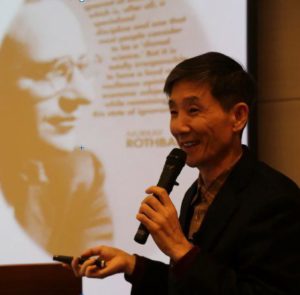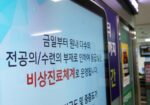Totalitarianism and fiat money in Korea

Yoong Deok Jeon
* the Academic President of Mises Institute Korea
* the Professor Emeritus of Daegu University
Architect Hyunjoon Yoo claims, reported by Chosun Ilbo on Oct 18, 2019, that conformity fosters a “totalitarian” practice. He continues that Koreans are at a high risk of getting consumed by such ideology from living in multifamily condominium units (the most common housing option in Korea) or attending architecturally similar schools as young students. Social network service (SNS), among other things, contributes to the development of totalitarianism in our modern society, he adds. While his arguments are valid, a more thorough analysis is warranted.
It is important to understand the economic background how conformity prevails in designing the exteriors of these buildings in Korea. In the case of housing, the piece of land at which the building is constructed is more relevant in determining the cost than the building itself. Since the economic development in the 1960s, the value of an acre of land has dramatically surged unparalleled to the increase in cost of other goods.
While the supply and demand of these units certainly impact the overall cost of land, money supply is directly causing the skyrocketed cost that is not fully explained by the supply and demand alone. Purchasing a housing unit in one of these multi-story homes, or even other types of houses, has always required an exorbitant amount of money, almost costing one man’s lifelong income or savings. Given the steep price upswing in housing units, we can logically assume the largest piece of the pie of the housing cost must come from the cost of land that the building was built on. Consequently, construction companies are only left with one option: cut the spending on other resources. Thus, these companies opt for using the same old exterior designs that cost minimally, simultaneously erecting a high-rise building to maximize the number of units in a small space. This is the fundamental reason that all exteriors of these buildings look alike and reiterates
Hypothetically, let’s assume one can buy a medium-sized unit if one saves 40 years’ worth of income without spending a penny. If those same homes become more affordable, say 10 years’ worth of savings versus 40 years’ worth, the construction companies (which often serve as a property management company in Korea) would try to build a more aesthetically pleasing looking building in order to attract more potential tenants. It may not be the most elegant looking building in the world, however, these multi-story apartments will not look as dull and sterile as they look now.
For school buildings, however, we should consider two different types of schools: public schools and private schools. Construction spending for public schools would be allocated by the government including the local government, and the budget from public funding would be very limited. When it comes to building private schools, spending would be covered by various fees including the tuition fees paid by the students, and these fees have always been strictly regulated by setting the “maximum price” as well. All the while, the cost to build a school including the labor wage for the construction workers has continuously been rising. It’s important to note, however, that the rise in cost is ultimately due to the increase in money supply. School administrators would inevitably implement cost saving plans that would include using mundane blueprints, cheaper materials, methods to save the cost of labor, and more. This is also evident in having unvarying looks in red brick buildings across many U.S. state college campuses, which is equivalent to having monotonous styles in Korean school buildings.
We need to take actions before Korean society drifts toward totalitarianism even further. Architect Yoo argues that “brining diversity into housing and school architecture” would prevent the spread of totalitarianism. Given the economic principles dictating the mere exterior designs of such buildings, his proposal without a properly established causation is unrealistic and questionable at best.
A sustained increase in money supply over the last few decades, that is, a continuous decline in currency value, is the main reason that condominiums and school buildings have been having the consistent looks. Depreciation in currency is not the one and only cause of totalitarianism, yet, what looks like growing totalitarianism in Korean society stems from a continuous decline in currency value.
To prevent the widespread of totalitarianism, increasing money supply must be stopped, and essentially discontinue fiat money issued by a central bank and institute commodity money. Even more fundamentally, we should be constantly reminded at home and at school that we should pursue individualism, not totalitarianism. Needless to say, totalitarianism is a very dangerous ideology.
태그 : #경제현안 #화폐와_은행 #큰정부












